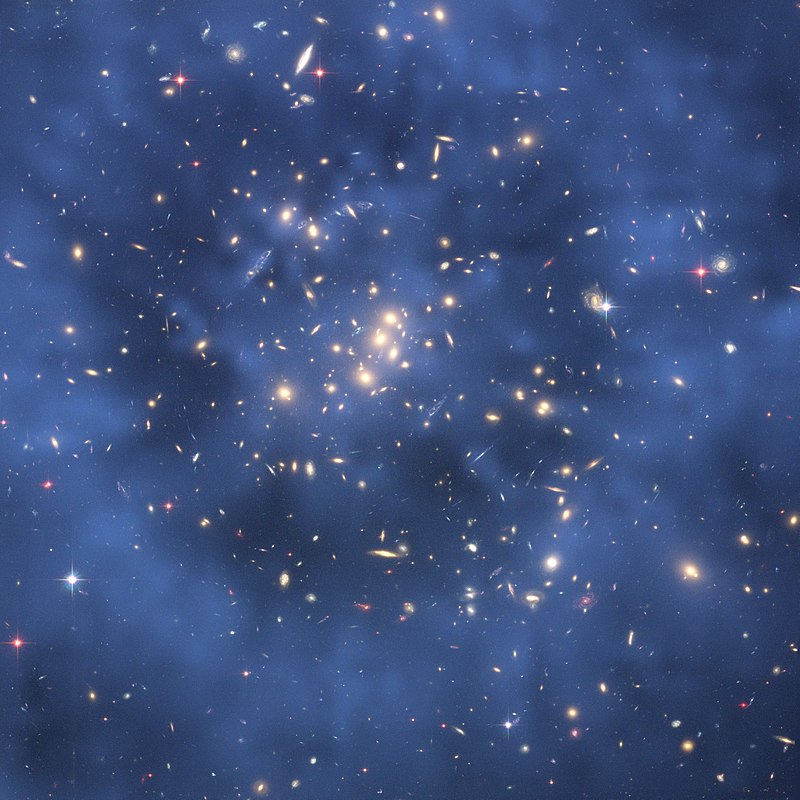
From ScienceDaily:
Why do the majority of astronomers believe in dark matter: matter whose composition is unknown but which seems to make up 80% of the mass of the galaxies? The concept was invented in the 1930’s by Fritz Zwicky who used it to explain why the galaxies in the Coma cluster are moving much more quickly than can be explained in terms of their known masses. The most decisive step was taken in the 1970’s by the great Vera Rubin, who showed that the outer parts of galaxies are rotating much more quickly than we can explain using the combined masses of their stars, gas, and dust, and the law of gravity of Newton or Einstein.
…
In spiral galaxies, the stars of the bar usually rotate faster than their arms due to gravitation. Around the galactic nucleus, there is a so-called “corroding circle,” equidistant points from the center of the galaxy where the stars of the bar and those of the rest of the disk rotate at the same speed. All these points form the circle, and the distance between them and the nucleus is the “corotation radius,” which scientist could find thanks to observations. Then, they devised a quantitative method to discern the speed of rotation of the bars. If the bar slows down, the point would gradually move outward on the disk. The prediction stated that if the corotation radius was located at a distance from the galactic center greater than 1.4 times the length of the bar itself, it would be evidence that the bar would have been braked by the halo of dark matter around the galaxy.
It is not easy to measure the corotation radius, but during the past decade a number of measurements had been made, on a few dozen galaxies, and the values measured for the ratio between the corotation radius and the bar length were nearly all less than 1.4. These results shed doubt on the reality of dark matter halos and seemed to threaten the whole idea of dark matter. Now, however, an article recently published in the Astrophysical Journal by a team of IAC researchers, show that bars in galaxies are rotating much more slowly than had been inferred by previous works. Paper. (paywall) – J. Font, J. E. Beckman, I. Martínez-Valpuesta, A. S. Borlaff, P. A. James, S. Díaz-García, B. García-Lorenzo, A. Camps-Fariña, L. Gutiérrez, P. Amram. Kinematic Clues to Bar Evolution for Galaxies in the Local Universe: Why the Fastest Rotating Bars are Rotating Most Slowly. The Astrophysical Journal, 2017; 835 (2): 279 DOI: 10.3847/1538-4357/835/2/279More.
Really, it’s just new evidence for continuing the search. Which we were going to do anyway.
See also: Search for dark matter “reaching the end of its tether”? Silk, like Ellis, seems to be a non-crackpot cosmologist so he does not use expressions like “end of its tether” lightly.
and
Dark matter: Skeptics wanted
Follow UD News at Twitter!